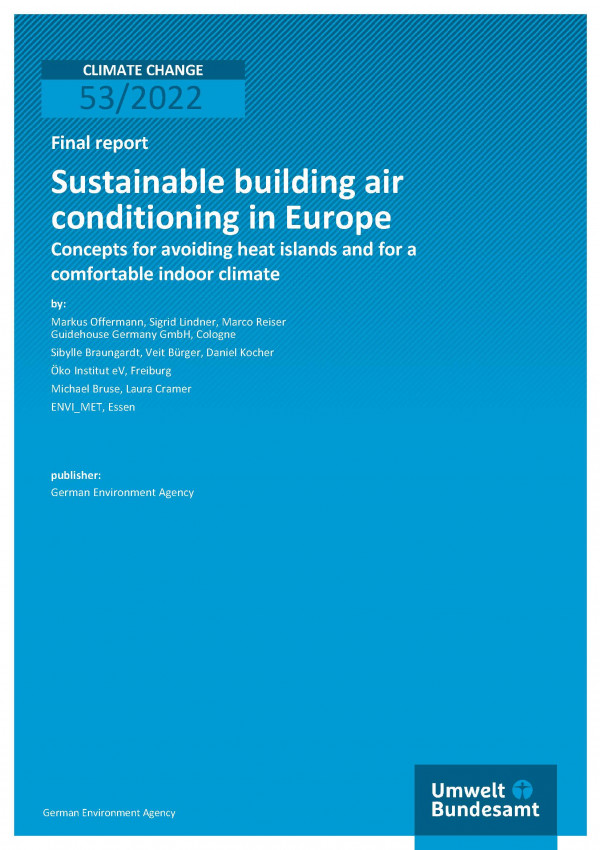The intensity of heat islands in urban areas with many sealed surfaces and little vegetation is increasing due to climate change. This study investigated both how to mitigate this effect on affected neighbourhoods and how to provide agreeable indoor temperature, if possible without air conditioning. Using simulations of both microclimate and buildings, the effect of alterations in outdoor areas (planting vegetation) and on the surface of structures (e.g. shading devices, high insulation standard) were quantified in order to evaluate the improvement on thermal comfort. Interviews were also conducted to investigate how this topic is being addressed on a local level and the obstacles still in place. Recommendations are made for further development of legal framework and other instruments, thus demonstrating how to deal with the problem of urban heat islands.

Klima | Energie, Nachhaltigkeit | Strategien | Internationales
Sustainable building air conditioning in Europe
Concepts for avoiding heat islands and for a comfortable indoor climate
Reihe
Climate Change | 53/2022
Seitenzahl
234
Erscheinungsjahr
Autor(en)
Markus Offermann, Sigrid Lindner, Marco Reiser, Sibylle Braungardt, Veit Bürger, Daniel Kocher, Michael Bruse, Laura Cramer
Sprache
Englisch
Andere Sprachen
Forschungskennzahl
3718 15 004 0
Verlag
German Environment Agency
Zusatzinfo
PDF ist barrierefrei
Dateigröße
17047 KB
Preis
0,00 €
Druckversion
nicht lieferbar
Als hilfreich bewertet
40




